CHRONIC DISEASE SS of of the SMALL

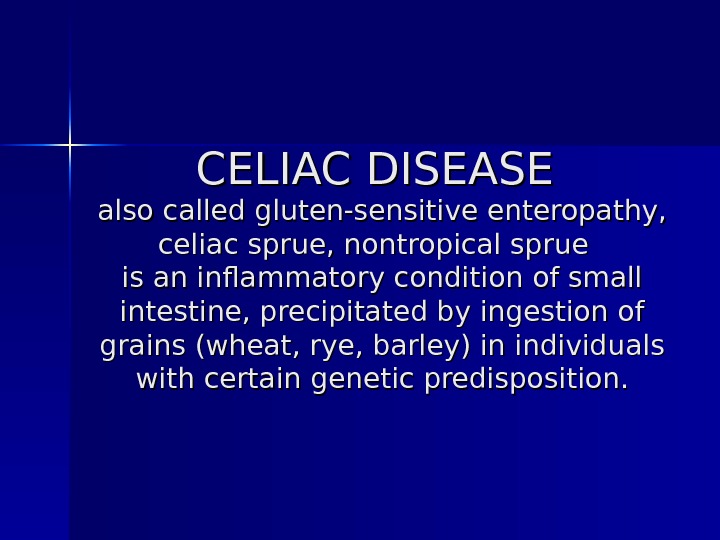

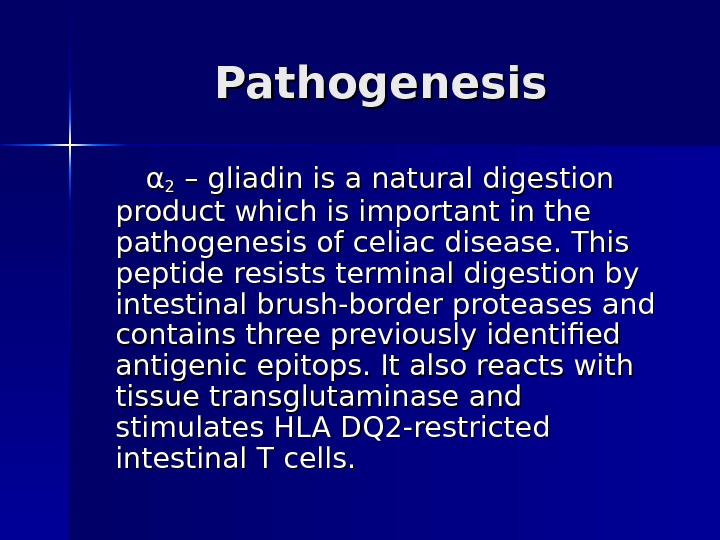
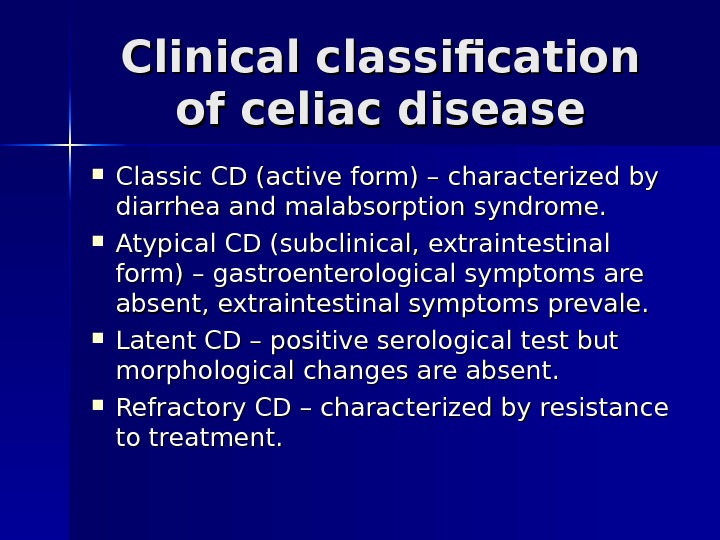

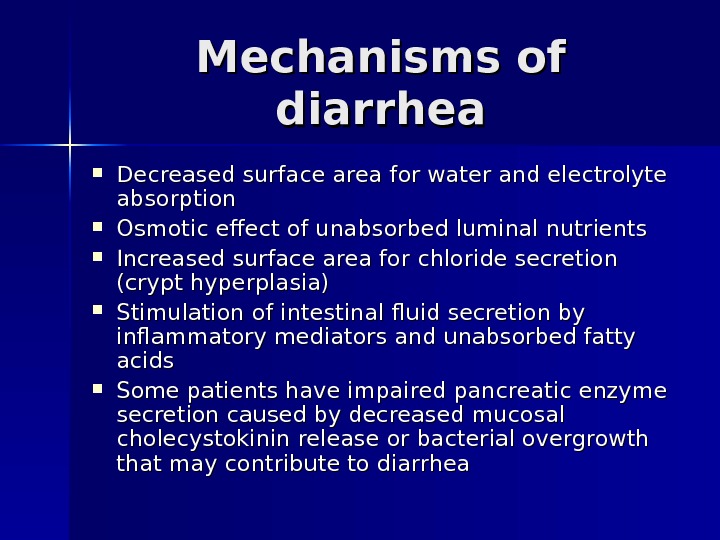
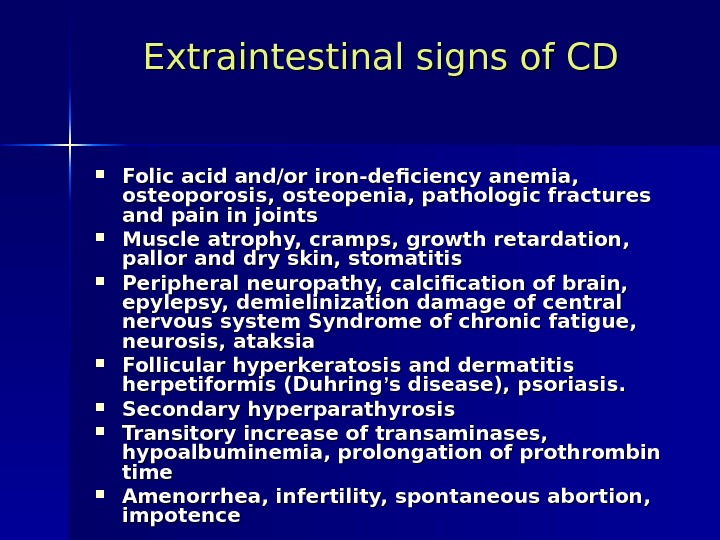


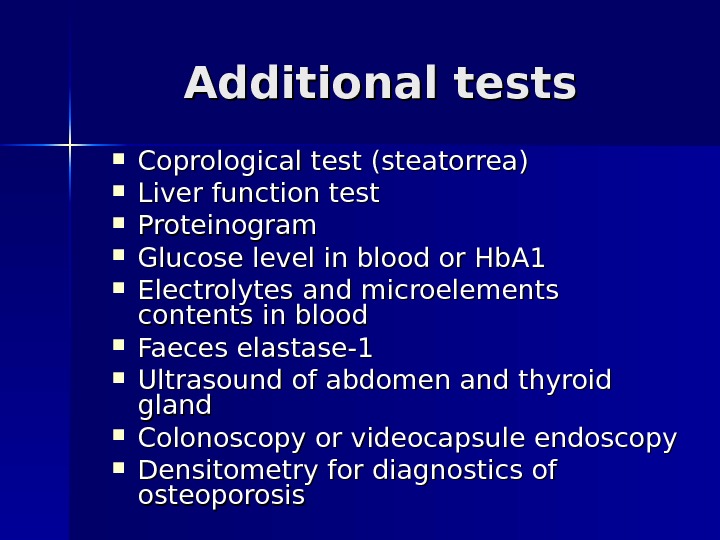
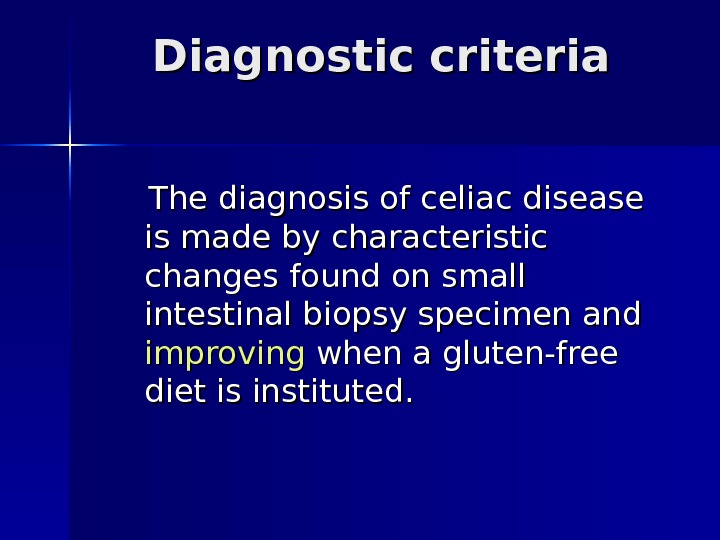
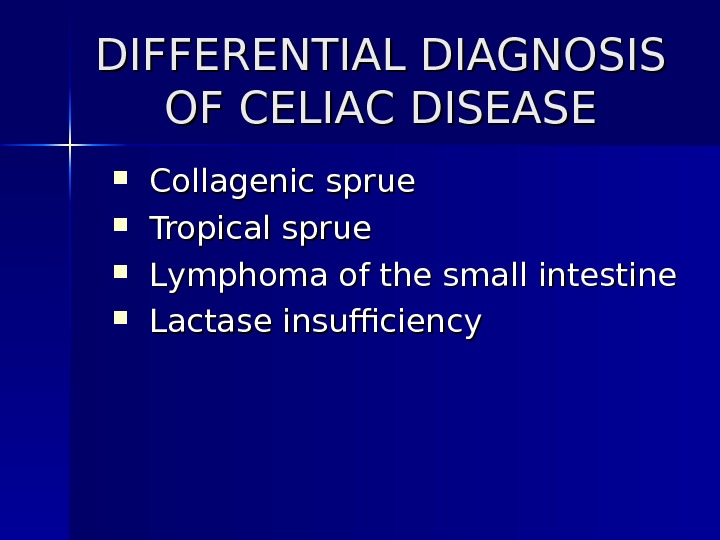
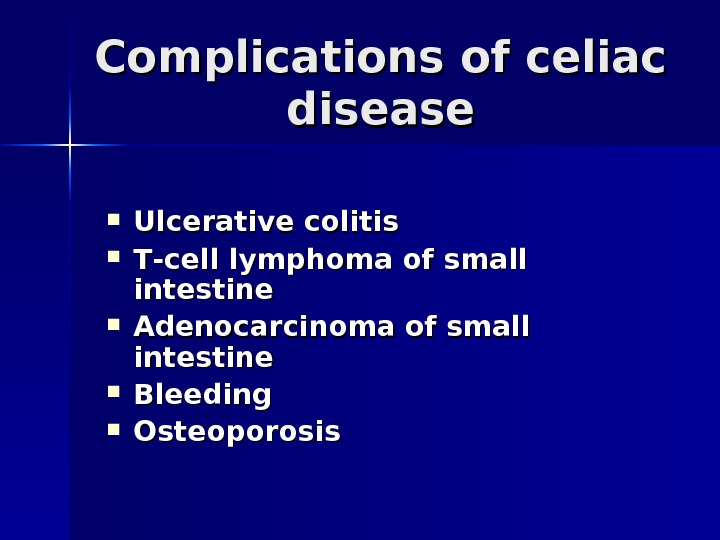
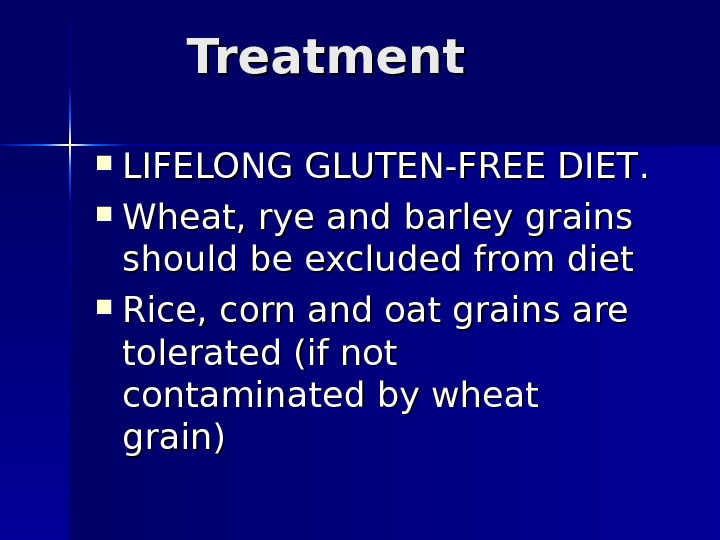
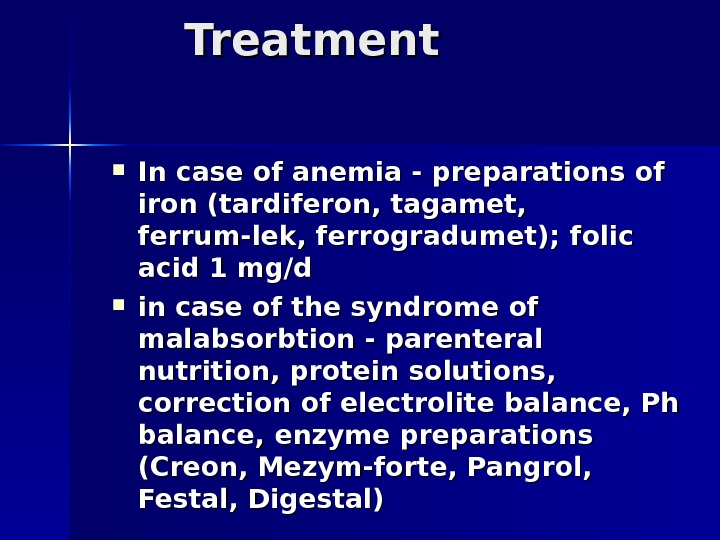

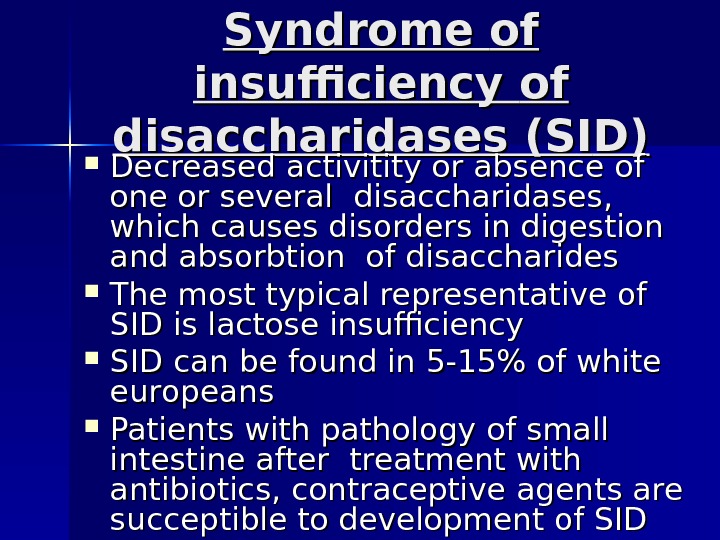
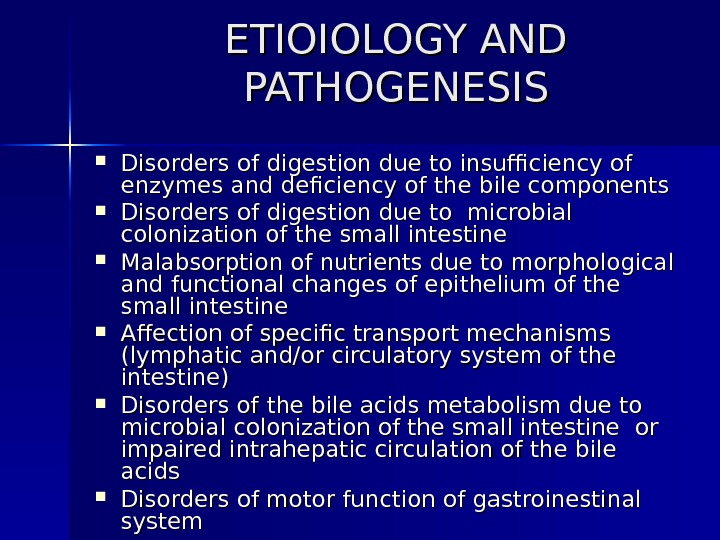
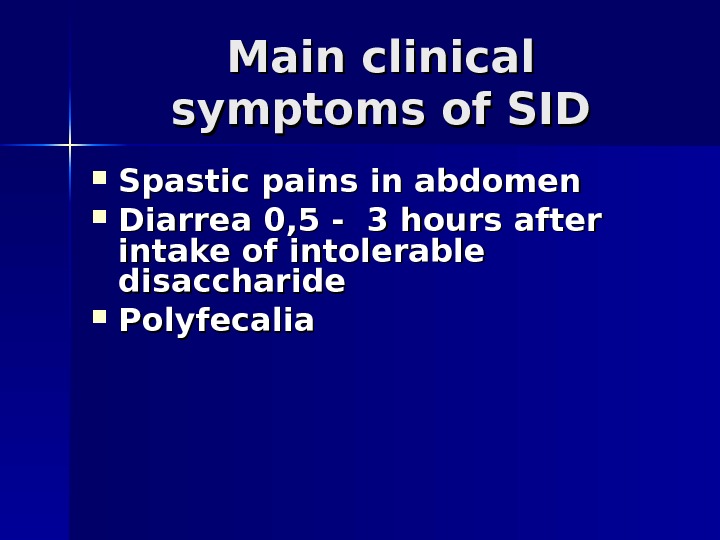
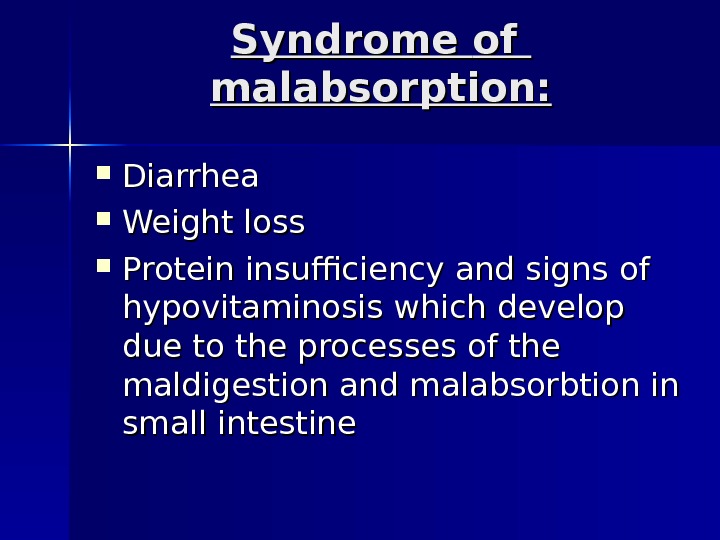

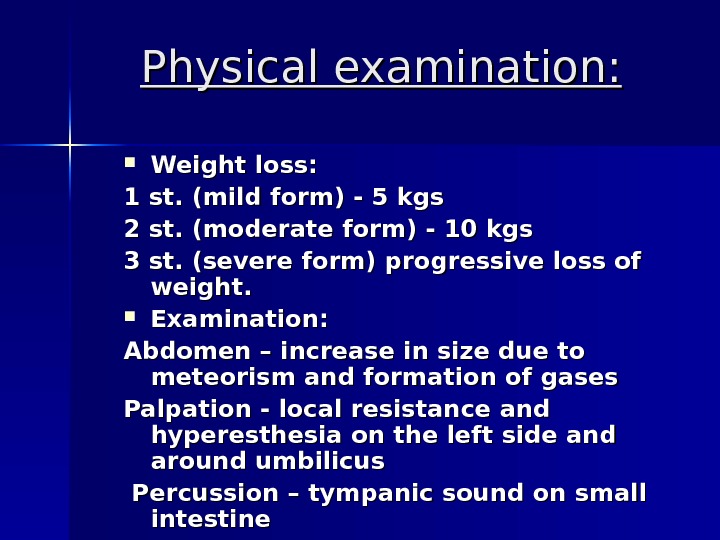

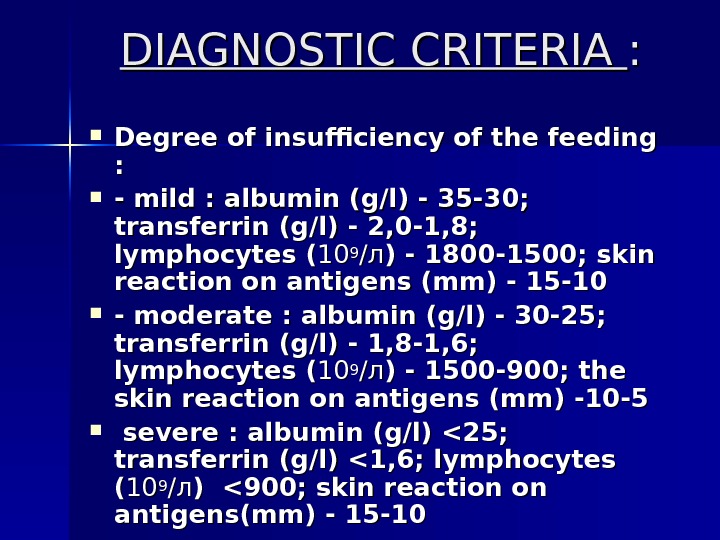
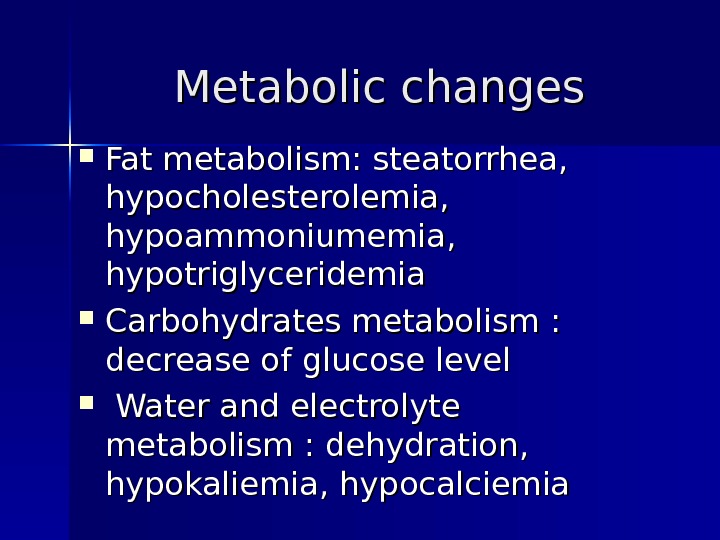
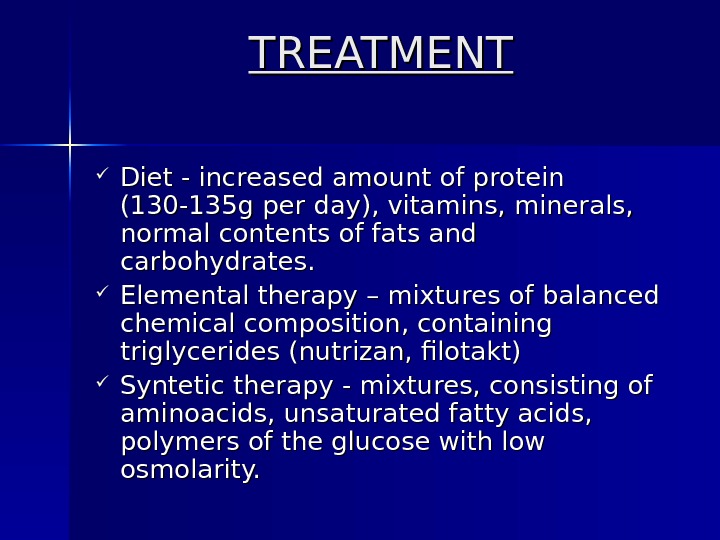
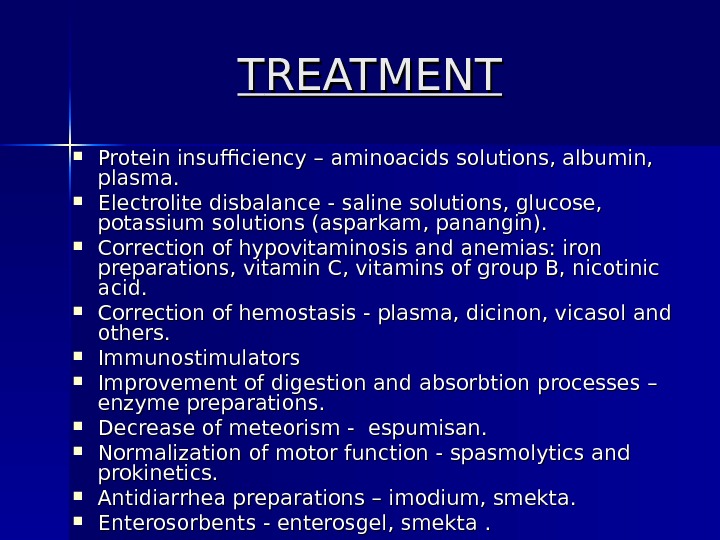
- Размер: 329.5 Кб
- Количество слайдов: 28
Описание презентации CHRONIC DISEASE SS of of the SMALL по слайдам
 CHRONIC DISEASE SS of of the SMALL INTESTIN
CHRONIC DISEASE SS of of the SMALL INTESTIN
 CELIAC DISEASE also called gluten-sensitive enteropathy, celiac sprue, nontropical sprue is an inflammatory condition of small intestine, precipitated by ingestion of grains (wheat, rye, barley) in individuals with certain genetic predisposition.
CELIAC DISEASE also called gluten-sensitive enteropathy, celiac sprue, nontropical sprue is an inflammatory condition of small intestine, precipitated by ingestion of grains (wheat, rye, barley) in individuals with certain genetic predisposition.
 Etiology The main serological markers for celiac disease are: antigliadin (AGA), antiendomysial (EMA) and anti-tissue transglutaminase (anti-t. TG) antibodies. Environmental factor: the alcohol-soluble protein fraction of wheat gluten, the gliadins and similar prolamins in rye and barley trigger the intestinal inflammation. Genetic factor: predisposition to gluten sensitivity is mapped to the HLA-D region on chromosome 6. More than 90% of individuals with celiac disease have DQ 2 heterodimer.
Etiology The main serological markers for celiac disease are: antigliadin (AGA), antiendomysial (EMA) and anti-tissue transglutaminase (anti-t. TG) antibodies. Environmental factor: the alcohol-soluble protein fraction of wheat gluten, the gliadins and similar prolamins in rye and barley trigger the intestinal inflammation. Genetic factor: predisposition to gluten sensitivity is mapped to the HLA-D region on chromosome 6. More than 90% of individuals with celiac disease have DQ 2 heterodimer.
 Pathogenesis αα 22 – gliadin is a natural digestion product which is important in the pathogenesis of celiac disease. This peptide resists terminal digestion by intestinal brush-border proteases and contains three previously identified antigenic epitops. It also reacts with tissue transglutaminase and stimulates HLA DQ 2 -restricted intestinal T cells.
Pathogenesis αα 22 – gliadin is a natural digestion product which is important in the pathogenesis of celiac disease. This peptide resists terminal digestion by intestinal brush-border proteases and contains three previously identified antigenic epitops. It also reacts with tissue transglutaminase and stimulates HLA DQ 2 -restricted intestinal T cells.
 Clinical classification of celiac disease Classic CD (active form) – characterized by diarrhea and malabsorption syndrome. Atypical CD (subclinical, extraintestinal form) – gastroenterological symptoms are absent, extraintestinal symptoms prevale. Latent CD – positive serological test but morphological changes are absent. Refractory CD – characterized by resistance to treatment.
Clinical classification of celiac disease Classic CD (active form) – characterized by diarrhea and malabsorption syndrome. Atypical CD (subclinical, extraintestinal form) – gastroenterological symptoms are absent, extraintestinal symptoms prevale. Latent CD – positive serological test but morphological changes are absent. Refractory CD – characterized by resistance to treatment.
 Clinical features Celiac disease usually manifests early in life at about 2 years of age after wheat has been introduced into the diet, or later in 20 -40 years of life, but can occur at any age. CD usually has atypical course, without any specific clinical symptoms. Classic gastointestinal signs include: Watery diarrhea and weight loss. All major nutrients, most notably carbohydrates, fats, proteins, electrolytes, fat-soluble vitamins, calcium, magnesium, iron, folate and zinc are malabsorbed. Meteorism, abdominal pain. Functional dyspepsia, disorders of motor function of gastrointestinal tract, gastroesophageal reflux. Disorders of exocrine function of pancreas.
Clinical features Celiac disease usually manifests early in life at about 2 years of age after wheat has been introduced into the diet, or later in 20 -40 years of life, but can occur at any age. CD usually has atypical course, without any specific clinical symptoms. Classic gastointestinal signs include: Watery diarrhea and weight loss. All major nutrients, most notably carbohydrates, fats, proteins, electrolytes, fat-soluble vitamins, calcium, magnesium, iron, folate and zinc are malabsorbed. Meteorism, abdominal pain. Functional dyspepsia, disorders of motor function of gastrointestinal tract, gastroesophageal reflux. Disorders of exocrine function of pancreas.
 Mechanisms of diarrhea Decreased surface area for water and electrolyte absorption Osmotic effect of unabsorbed luminal nutrients Increased surface area for chloride secretion (crypt hyperplasia) Stimulation of intestinal fluid secretion by inflammatory mediators and unabsorbed fatty acids Some patients have impaired pancreatic enzyme secretion caused by decreased mucosal cholecystokinin release or bacterial overgrowth that may contribute to diarrhea
Mechanisms of diarrhea Decreased surface area for water and electrolyte absorption Osmotic effect of unabsorbed luminal nutrients Increased surface area for chloride secretion (crypt hyperplasia) Stimulation of intestinal fluid secretion by inflammatory mediators and unabsorbed fatty acids Some patients have impaired pancreatic enzyme secretion caused by decreased mucosal cholecystokinin release or bacterial overgrowth that may contribute to diarrhea
 Extraintestinal signs of CD Folic acid and/or iron-deficiency anemia, osteoporosis, osteopenia, pathologic fractures and pain in joints Muscle atrophy, сс ramps , , growth retardation, pallor and dry skin, stomatitis Peripheral neuropathy, calcification of brain, epylepsy, demielinization damage of central nervous system Syndrome of chronic fatigue, neurosis, ataksia Follicular hyperkeratosis and dermatitis herpetiformis (Duhring ’’ s disease), psoriasis. Secondary hyperparathyrosis Transitory increase of transaminases, hypoalbuminemia, prolongation of prothrombin time Amenorrhea, infertility, spontaneous abortion, impotence
Extraintestinal signs of CD Folic acid and/or iron-deficiency anemia, osteoporosis, osteopenia, pathologic fractures and pain in joints Muscle atrophy, сс ramps , , growth retardation, pallor and dry skin, stomatitis Peripheral neuropathy, calcification of brain, epylepsy, demielinization damage of central nervous system Syndrome of chronic fatigue, neurosis, ataksia Follicular hyperkeratosis and dermatitis herpetiformis (Duhring ’’ s disease), psoriasis. Secondary hyperparathyrosis Transitory increase of transaminases, hypoalbuminemia, prolongation of prothrombin time Amenorrhea, infertility, spontaneous abortion, impotence
 Diagnosis Family history of celiac disease, intolerance to grains Serologic alal assay of antibodies : : — — Ig. A-AGA ( antigliadin antibod iesies )) — — Ig. A-E MM A (A ( antiendomysial antibod iesies )) — — Ig. A- t. TG (anti tissue-transglutaminase antibod ies) Serologic markers are useful in supporting the diagnosis, in screening first-degree relatives and in following the response to gluten-free diet
Diagnosis Family history of celiac disease, intolerance to grains Serologic alal assay of antibodies : : — — Ig. A-AGA ( antigliadin antibod iesies )) — — Ig. A-E MM A (A ( antiendomysial antibod iesies )) — — Ig. A- t. TG (anti tissue-transglutaminase antibod ies) Serologic markers are useful in supporting the diagnosis, in screening first-degree relatives and in following the response to gluten-free diet
 Diagnosis Endoscopy of retrobulbar part of duodenum (small intestine) ++ BIOPSY with hystological investigation of mucosa — gold standart for diagnostics of celiac disease. Characteristic features found on intestinal biopsy include: the absence of villi crypt hyperplasia increased intraepithelial lymphocytes infiltration of the lamina propria with plasma cells and lymphocytes.
Diagnosis Endoscopy of retrobulbar part of duodenum (small intestine) ++ BIOPSY with hystological investigation of mucosa — gold standart for diagnostics of celiac disease. Characteristic features found on intestinal biopsy include: the absence of villi crypt hyperplasia increased intraepithelial lymphocytes infiltration of the lamina propria with plasma cells and lymphocytes.
 Additional tests Coprological t estest ( ( steatorrea )) Liver function test Proteinogram Glucose level in blood or Hb. A 1 Electrolytes and microelements contents in blood Faeces elastase-1 Ultrasound of abdomen and thyroid gland Colonoscopy or videocapsule endoscopy Densitometry for diagnostics of osteoporosis
Additional tests Coprological t estest ( ( steatorrea )) Liver function test Proteinogram Glucose level in blood or Hb. A 1 Electrolytes and microelements contents in blood Faeces elastase-1 Ultrasound of abdomen and thyroid gland Colonoscopy or videocapsule endoscopy Densitometry for diagnostics of osteoporosis
 Diagnostic cri teria The diagnosis of celiac disease is made by characteristic changes found on small intestinal biopsy specimen and improving when a gluten-free diet is instituted.
Diagnostic cri teria The diagnosis of celiac disease is made by characteristic changes found on small intestinal biopsy specimen and improving when a gluten-free diet is instituted.
 DIFFERENTIAL DIAGNOSIS OF OF CELIA C DISEASE CC ollagen icic sprue Tropical sprue LL yy mm phph oma of the small intestine Lactase insufficiency
DIFFERENTIAL DIAGNOSIS OF OF CELIA C DISEASE CC ollagen icic sprue Tropical sprue LL yy mm phph oma of the small intestine Lactase insufficiency
 Complications of celiac disease Ulcer ative colitis Т-Т- cell lymphoma of small intestine Adenocarcinoma of small intestine Bleeding Osteoporosis
Complications of celiac disease Ulcer ative colitis Т-Т- cell lymphoma of small intestine Adenocarcinoma of small intestine Bleeding Osteoporosis
 Treatment LIFE LONG GLUTEN-FREE DIET. . Wheat, rye and barley grains should be excluded from diet Rice, corn and oat grains are tolerated (if not contaminated by wheat grain)
Treatment LIFE LONG GLUTEN-FREE DIET. . Wheat, rye and barley grains should be excluded from diet Rice, corn and oat grains are tolerated (if not contaminated by wheat grain)
 Treatment In case of of anemia — preparations of of iron (tardiferon, tagamet, ferrum-lek, ferrogradumet); folic acid 1 mg/d inin case of the s yndrom ee of of malabsorbtion — — parenteral nutrition , protein solutions , , correction of electrolite balance, Ph. Ph balance, enzyme preparations (Creon, Mezym-forte, Pangrol, Festal, Digestal)
Treatment In case of of anemia — preparations of of iron (tardiferon, tagamet, ferrum-lek, ferrogradumet); folic acid 1 mg/d inin case of the s yndrom ee of of malabsorbtion — — parenteral nutrition , protein solutions , , correction of electrolite balance, Ph. Ph balance, enzyme preparations (Creon, Mezym-forte, Pangrol, Festal, Digestal)
 Treatment For prevention and treatment of osteoporosis – preparations of calcium citrate/carbonate (500 mg/d), calcitonin, vitamin D (25000 -50000 UI/d) In In severe cases — — prednizolon 20 -30 mg/d , , methylprednizolon 8 mg/d, hydrocortizon 125 mg/d with gradual reduction of the dose. . Follow-up on regular basis, including correcti onon of of the diet and treatment, prevention of of complications, associated diseases and etc.
Treatment For prevention and treatment of osteoporosis – preparations of calcium citrate/carbonate (500 mg/d), calcitonin, vitamin D (25000 -50000 UI/d) In In severe cases — — prednizolon 20 -30 mg/d , , methylprednizolon 8 mg/d, hydrocortizon 125 mg/d with gradual reduction of the dose. . Follow-up on regular basis, including correcti onon of of the diet and treatment, prevention of of complications, associated diseases and etc.
 Syndrome of of insufficiency of of disaccharidases (S (S II D)D) Decreased activiti tyty or absence of of one or several disaccharidases , , which causes disorders in digestion and absorbtion of disaccharides The m ost typical representative of SIDSID is lactose insufficiency SID can be found in 5 -15% of white european ss Patients with pathology of small intestine after treatment with antib iotics, contraceptive agents are succeptible to development of SI
Syndrome of of insufficiency of of disaccharidases (S (S II D)D) Decreased activiti tyty or absence of of one or several disaccharidases , , which causes disorders in digestion and absorbtion of disaccharides The m ost typical representative of SIDSID is lactose insufficiency SID can be found in 5 -15% of white european ss Patients with pathology of small intestine after treatment with antib iotics, contraceptive agents are succeptible to development of SI
 ETIO IOLOGY AND PATPAT HH OGENE SISSIS Disorders of digestion due to insufficiency of of enzymes and defici ency of the bil ee components Disorders of digestion due to microbial colonization of the small intestine Malabsorption of nutrients due to morphological and functional change ss ofof epithelium of the small intestine Affection of of specific transport mechanism ss (lymphatic and/or circulatory system of the intestine )) Disorders of the bil ee acids metabolism due to microbial colonization of the small intestine or or impaired intrahepatic circulation of the bil ee acids Disorders ofof motor function of gastroinestinal system
ETIO IOLOGY AND PATPAT HH OGENE SISSIS Disorders of digestion due to insufficiency of of enzymes and defici ency of the bil ee components Disorders of digestion due to microbial colonization of the small intestine Malabsorption of nutrients due to morphological and functional change ss ofof epithelium of the small intestine Affection of of specific transport mechanism ss (lymphatic and/or circulatory system of the intestine )) Disorders of the bil ee acids metabolism due to microbial colonization of the small intestine or or impaired intrahepatic circulation of the bil ee acids Disorders ofof motor function of gastroinestinal system
 Main clinical symptoms of SID SS pastic pains in abdomen Diar rr ea 0, 5 — 3 hours after intake of intolerable disaccharide Pol yy fefe cc alia
Main clinical symptoms of SID SS pastic pains in abdomen Diar rr ea 0, 5 — 3 hours after intake of intolerable disaccharide Pol yy fefe cc alia
 Syndrome of of malabsorption : : Diarrhea Weight loss PP rotein insufficiency and signs of of hypovitaminosis which develop due to the processes of the malmal digestion and malabsorbtion in small intestine
Syndrome of of malabsorption : : Diarrhea Weight loss PP rotein insufficiency and signs of of hypovitaminosis which develop due to the processes of the malmal digestion and malabsorbtion in small intestine
 CLINIC AL symptoms include intestin alal and extra intestin alal manifestation ss Involvement of the digestive system: diarrhea , , steatorrhea , , meteorism , , abdominal pain, anorexia , , nausea. . Involvement of biliary system: gallstone formation. . Metabolic disorders : : insufficiency of proteins , , decrease of energy metabolism, electrolyte disbalanse , , hypovitaminosis. . Involvement of the blood s ystem: anemia, hemorrhages. . Involvement of the bone s and muscular system: pain in bone ss , , osteoporosis. . Involvement of the kidneys : : stone formation. Involvement of the endocrine system: pituitary insufficiency, hypo thyroidism , , hypofunction of adrenal cortex a a nd sexual glands. .
CLINIC AL symptoms include intestin alal and extra intestin alal manifestation ss Involvement of the digestive system: diarrhea , , steatorrhea , , meteorism , , abdominal pain, anorexia , , nausea. . Involvement of biliary system: gallstone formation. . Metabolic disorders : : insufficiency of proteins , , decrease of energy metabolism, electrolyte disbalanse , , hypovitaminosis. . Involvement of the blood s ystem: anemia, hemorrhages. . Involvement of the bone s and muscular system: pain in bone ss , , osteoporosis. . Involvement of the kidneys : : stone formation. Involvement of the endocrine system: pituitary insufficiency, hypo thyroidism , , hypofunction of adrenal cortex a a nd sexual glands. .
 Physical examination : : Weight loss : : 1 st. ( mild form) — — 5 kgs 2 st. ( moderate form) — — 10 kgs 3 st. ( severe form) progressi ve loss of weight. . Examination : : Abdomen – increase in size due to meteorism and formation of gases Palpation — local resistance and hyperesthesia on the left side and aa round umbilicus Per cc usus ss ii on – tympanic sound on small intestine
Physical examination : : Weight loss : : 1 st. ( mild form) — — 5 kgs 2 st. ( moderate form) — — 10 kgs 3 st. ( severe form) progressi ve loss of weight. . Examination : : Abdomen – increase in size due to meteorism and formation of gases Palpation — local resistance and hyperesthesia on the left side and aa round umbilicus Per cc usus ss ii on – tympanic sound on small intestine
 DIAGNOS ISIS OF OF SS II DD TT he he clin icic al signs appear afte r intake of intolerable disaccharide. . CC opro gram – acid reaction of feces (( p. H < < 6, 0) LL actose tolerance test — ingestion of 50 50 g of lactose causes insufficient increase ofof glucose level in blood; meteorism , , tenesmus , , diarrhea. Morphology — — absence of the lactose in in biopsy specimen of small intestine
DIAGNOS ISIS OF OF SS II DD TT he he clin icic al signs appear afte r intake of intolerable disaccharide. . CC opro gram – acid reaction of feces (( p. H < < 6, 0) LL actose tolerance test — ingestion of 50 50 g of lactose causes insufficient increase ofof glucose level in blood; meteorism , , tenesmus , , diarrhea. Morphology — — absence of the lactose in in biopsy specimen of small intestine
 DIAGNOSTIC CRITERIA : : Degree ofof insufficiency of the feeding : : — — mild : albumin ( gg // ll ) — 35 -30; transferrin ( ( gg // ll ) — 2, 0 -1, 8; lymphocytes ( ( 1010 99 /л/л ) — 1800 -1500; skin reaction on antigens (mm) — 15 -10 — — moderate : albumin ( gg // ll ) — 30 -25; transferrin ( ( gg // ll ) — 1, 8 -1, 6; lymphocytes ( ( 1010 99 /л/л ) ) — 1500 -900; the skin reaction on antigens (mm) -10 -5 severe : albumin ( gg // ll ) <25; transferrin (( gg // ll ) <1, 6; lymphocytes (( 1010 99 /л/л ) <900; skin reaction on antigens(mm) — — 15 —
DIAGNOSTIC CRITERIA : : Degree ofof insufficiency of the feeding : : — — mild : albumin ( gg // ll ) — 35 -30; transferrin ( ( gg // ll ) — 2, 0 -1, 8; lymphocytes ( ( 1010 99 /л/л ) — 1800 -1500; skin reaction on antigens (mm) — 15 -10 — — moderate : albumin ( gg // ll ) — 30 -25; transferrin ( ( gg // ll ) — 1, 8 -1, 6; lymphocytes ( ( 1010 99 /л/л ) ) — 1500 -900; the skin reaction on antigens (mm) -10 -5 severe : albumin ( gg // ll ) <25; transferrin (( gg // ll ) <1, 6; lymphocytes (( 1010 99 /л/л ) <900; skin reaction on antigens(mm) — — 15 —
 Metabolic changes Fat metabolism : : steatorrhea , , hypocholesterolemia , , hypoammoniumemia , , hypotriglyceridemia Carbohydrates metabolism : : decrease of glucose level Water and electrolyte metabolism : : dehydration , , hypokaliemia , , hypocalciemia
Metabolic changes Fat metabolism : : steatorrhea , , hypocholesterolemia , , hypoammoniumemia , , hypotriglyceridemia Carbohydrates metabolism : : decrease of glucose level Water and electrolyte metabolism : : dehydration , , hypokaliemia , , hypocalciemia
 TREATMENT Die t -t — increased amount ofof protein (130 -135 g per day ), vitamin ss , , mineral ss , , normal contents of fat ss and carbohydrate ss. . El. El ee ment al th erapy – – mixture s of balanced chemical composition , , containing triglycerides ( ( nutrizan , , filotakt ) ) Syntetic thth erapy — — mixture ss , consisting ofof aminoacid ss , unsaturated fat tyty acids, polymer ss of the glucose with low osmolarity.
TREATMENT Die t -t — increased amount ofof protein (130 -135 g per day ), vitamin ss , , mineral ss , , normal contents of fat ss and carbohydrate ss. . El. El ee ment al th erapy – – mixture s of balanced chemical composition , , containing triglycerides ( ( nutrizan , , filotakt ) ) Syntetic thth erapy — — mixture ss , consisting ofof aminoacid ss , unsaturated fat tyty acids, polymer ss of the glucose with low osmolarity.
 TT REATMENT Protein insufficiency – – aminoacid s solutions , albumin, plasma. Ele cc trolite disbalance — — saline solutions , glucose, potassium solutions (asparkam , panangin )). . Correction of hypovitaminosis and anemias : iron preparations , vitamin С , vitamins of group В, nicotin icic acid. . Correction of hemostasis — plasma, dicinon , , vicasol and others. Immunostimul ators Improvement of digestion and absorbtion processes – – enzyme preparations. . Decrease of meteorism — espumisan. . Normalization of motor function — spasmolytics and prokinetics. Antidiar rhrh ee a preparations –– imodium, smekta. . Enterosorbent ss — enterosgel , , smekta . .
TT REATMENT Protein insufficiency – – aminoacid s solutions , albumin, plasma. Ele cc trolite disbalance — — saline solutions , glucose, potassium solutions (asparkam , panangin )). . Correction of hypovitaminosis and anemias : iron preparations , vitamin С , vitamins of group В, nicotin icic acid. . Correction of hemostasis — plasma, dicinon , , vicasol and others. Immunostimul ators Improvement of digestion and absorbtion processes – – enzyme preparations. . Decrease of meteorism — espumisan. . Normalization of motor function — spasmolytics and prokinetics. Antidiar rhrh ee a preparations –– imodium, smekta. . Enterosorbent ss — enterosgel , , smekta . .
